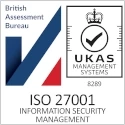15
+
YEARS OF
EXPERIENCE
1000
+
SUCCESSFUL
Projects
80
+
Satisfied
Clients

In today’s increasingly connected world, organizations face a growing number of cybersecurity threats. From malware to ransomware and advanced persistent threats, the risk to sensitive data and systems is ever-present. To defend against these evolving dangers, businesses need more than just traditional security tools.
What is EDR?
Endpoint Detection and Response (EDR) refers to a set of cybersecurity tools and technologies designed to monitor, detect, and respond to threats on endpoint devices such as laptops, desktops, mobile devices, and servers. EDR solutions continuously collect data from these devices to identify suspicious activities, such as unauthorized access, unusual behavior, or malware infections. Once a potential threat is detected, EDR systems not only alert security teams but also offer detailed information on the attack’s nature and help isolate affected devices to prevent further damage.
The primary goal of EDR is to provide visibility into what’s happening on each endpoint, enabling IT teams to detect threats early and take swift action to mitigate risks. This is especially important as endpoint devices are frequent targets for cybercriminals seeking to gain access to sensitive company data.
What is XDR?
Extended Detection and Response (XDR) builds upon the concepts of EDR but extends its capabilities to offer broader protection across an organization’s entire IT infrastructure. While EDR focuses primarily on endpoints, XDR integrates data from a variety of security layers—such as networks, cloud environments, servers, and email systems—into a unified platform. By correlating data from multiple sources, XDR provides a more holistic view of the threat landscape, allowing for better detection of complex, multi-vector attacks that might go unnoticed in traditional security solutions.
XDR is designed to offer enhanced visibility by analyzing data from across the entire network, improving detection and response capabilities. For example, if an endpoint is compromised, XDR can quickly correlate that event with other activities on the network or in the cloud, helping security teams to identify broader threats and respond more effectively. This integrated approach reduces the risk of blind spots that could leave an organization vulnerable.





The Need for EDR and XDR Management
Both EDR and XDR solutions offer powerful protection against modern cyber threats, but they require expert management to truly deliver on their promise. Without proper management, businesses risk missing critical alerts, failing to respond quickly enough to threats, or misconfiguring security policies, which could leave their systems exposed.
EDR and XDR solutions collect vast amounts of data from endpoints, networks, and other systems. This data needs to be continuously monitored and analyzed to identify potential threats in real time. Given the complexity of modern attacks, automated detection alone is not always enough. Organizations need skilled cybersecurity professionals who can interpret alerts, conduct investigations, and make informed decisions about how to respond. With expert management, businesses can ensure that EDR and XDR systems are finely tuned to detect threats specific to their environment, thereby improving the accuracy and effectiveness of alerts.
Another key aspect of EDR and XDR management is the ability to respond quickly to incidents. In today’s threat landscape, speed is critical. Cyberattacks, such as ransomware or data exfiltration, can escalate quickly, causing significant damage if not dealt with immediately. A managed EDR or XDR service provides organizations with 24/7 monitoring, enabling faster identification and containment of threats. Additionally, the team overseeing these tools will be equipped to perform incident analysis, root cause analysis, and remediation, minimizing the impact of an attack.
The Benefits of EDR and XDR Management
Proper EDR and XDR management offer several significant benefits to businesses. First, it enhances the ability to detect advanced threats. While traditional security solutions like firewalls and antivirus programs focus on known threats, EDR and XDR use advanced analytics, behavior analysis, and machine learning to detect new or unknown attack methods. Proper management ensures that these solutions are configured to spot the most sophisticated threats before they can cause harm.
Second, EDR and XDR management reduce the risk of human error. While automated security tools can identify threats, they require skilled personnel to investigate and respond effectively. Managed services provide access to cybersecurity experts who can handle alerts, analyze incidents, and coordinate responses in real time. This level of expertise can significantly improve the organization’s overall security posture.
Moreover, managed services also ensure that the security solutions remain up to date. The threat landscape is constantly changing, and new vulnerabilities are discovered regularly. Regular updates to EDR and XDR systems are essential to ensure that they remain effective against emerging threats. A managed service provider will ensure that your systems are continuously updated with the latest patches, threat intelligence, and security configurations.
Security Solutions
Comprehensive security solutions to protect your data, networks, and systems from evolving cyber threats and vulnerabilities.Outsourced Security Management
Outsource your security management to experts, ensuring continuous protection, monitoring, and compliance for your business.MS Defender Platform
Utilize Microsoft Defender Platform for integrated, advanced threat protection across endpoints, identities, and cloud environments.
Improving Operational Efficiency
Another major benefit of EDR and XDR management is the operational efficiency it brings. Security teams in-house are often overwhelmed by the sheer volume of alerts generated by these systems. Without proper filtering and prioritization, it can be difficult to distinguish between false positives and actual threats. Managed services ensure that alerts are triaged and escalated appropriately, allowing security teams to focus on the most critical incidents while avoiding alert fatigue.
Moreover, by outsourcing the management of these solutions, businesses can reduce the burden on internal IT staff, enabling them to focus on other strategic initiatives. Managed EDR and XDR services offer scalability, meaning they can adapt as the business grows or its cybersecurity needs evolve. Whether it’s expanding the scope of monitoring to include new endpoints or scaling for more complex network architectures, managed services can quickly adjust to meet changing requirements.
Compliance and Reporting
Many industries are subject to strict cybersecurity regulations, such as GDPR, HIPAA, and PCI DSS, which require businesses to demonstrate compliance through regular security audits and reporting. Managed EDR and XDR services can help organizations meet these requirements by providing the necessary tools to generate compliance reports and logs. These reports can document security incidents, responses, and investigations, helping businesses avoid regulatory penalties and maintain their reputation in the marketplace.
Conclusion
EDR and XDR management are critical for businesses looking to safeguard their digital environments against modern cyber threats. These advanced solutions offer powerful capabilities for detecting and responding to threats across a range of systems, from endpoints to networks and cloud environments. However, to truly maximize the potential of EDR and XDR, expert management is essential. Outsourcing this responsibility to specialized providers ensures that businesses can detect threats more accurately, respond faster, and continuously improve their cybersecurity posture. In an era of increasingly sophisticated cyberattacks, managed EDR and XDR services provide the proactive defense needed to keep organizations secure, compliant, and resilient.

answer time
satisfaction
score
on initial call
same business
day









